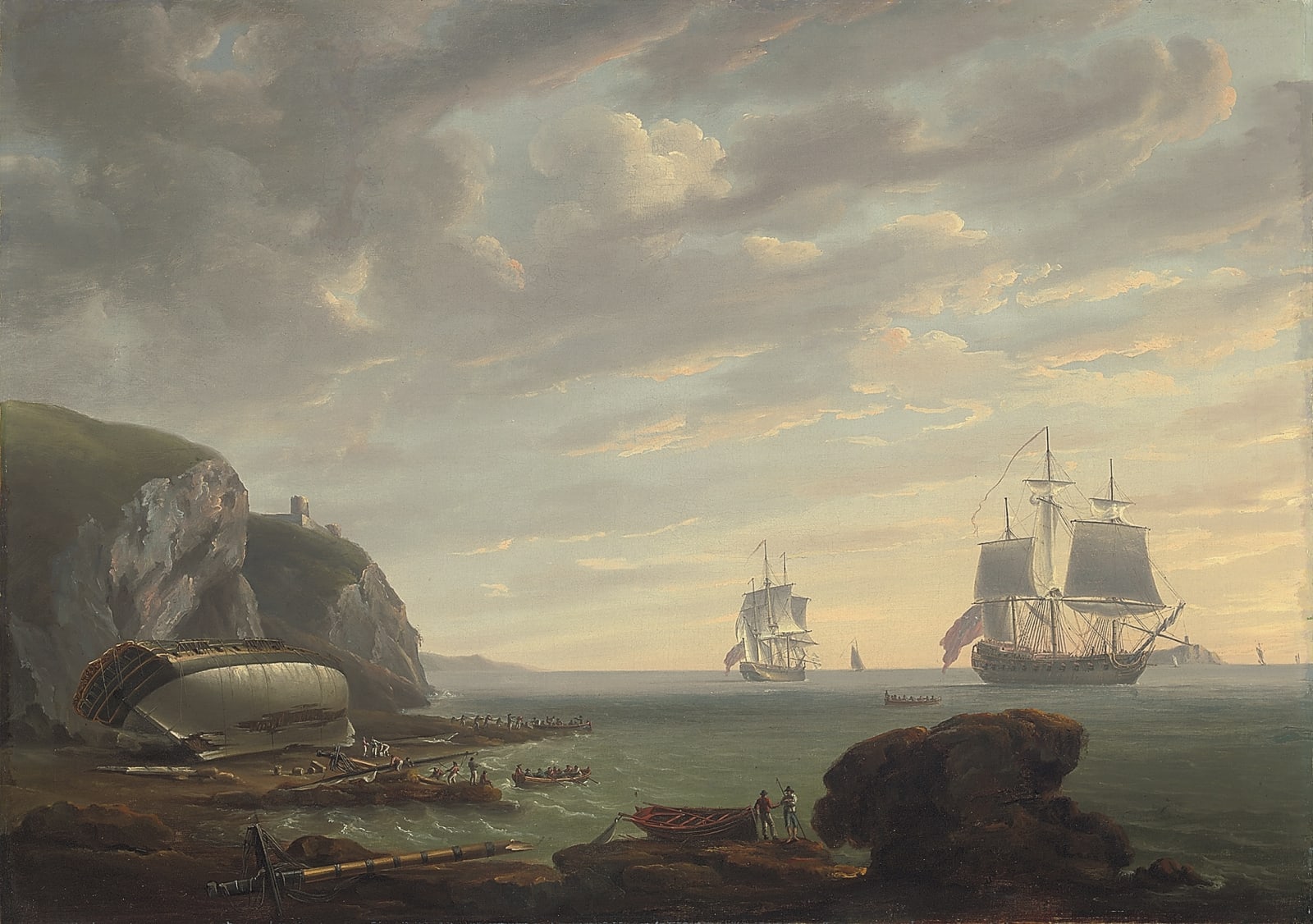Nicholas Pocock British, 1740-1821
Provenance
with Parker Gallery, London.
H.M.S. Crocodile was returning home from duty in India and, having sighted the Scilly Isles early in the evening of 8th May [1784], set a course to take her up the English Channel. Before long however, the weather became hazy and, by nightfall, there was a thick fog. Just before 3 o’clock the next morning, Crocodile ran hard aground on the rocky foreshore at Prawle Point, near Salcombe, South Devon, with such force that her commander, Captain John Williamson, who was not on deck at the time, thought that he had collided with another vessel. When it became apparent that the ship had stranded, every effort was made to pull her off the rocks but to no avail. As a last resort, even her masts were cut away, but she would not budge; with seven feet of water in the hold and his ship in imminent danger of toppling over as the tide ebbed, Williamson reluctantly gave the order to abandon her. All of the crew were saved and most of her stores were successfully salvaged; however, Captain Williamson was criticised at his subsequent Court Martial for not ordering soundings to be taken when inshore in heavy fog and he was officially reprimanded.
This charming view of the stranded Crocodile was almost certainly commissioned by Captain Williamson who, whatever the verdict of the Court Martial, probably felt himself to be blameless given that he was asleep at the time and his ship should have been in the safe hands of the officer-ofthe-watch. The painting itself shows the scene on the morning after the tragedy, as every effort is made to salvage what can be saved before the hull begins to break up from the action of the sea.
Crocodile was a relatively new 24-gun frigate built at Portsmouth and launched on 25th April 1781 at a cost of just over £15,000. Completed two months later, she served mostly in Home Waters until the end of the American War of Independence and thereafter spent a year in the East Indies prior to her loss.
